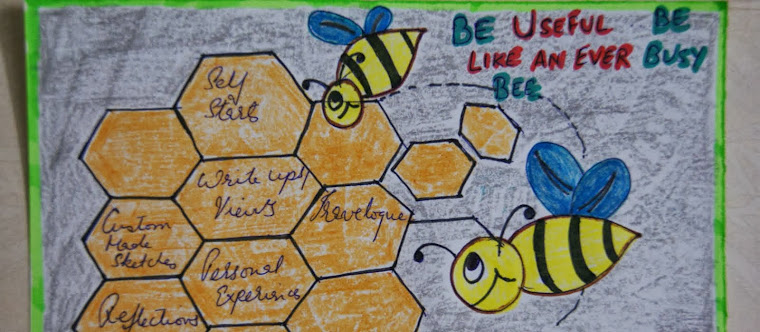Eggs are such an
important part of our eating regime. We eat it all the time and almost in all
fashion. But have you ever stopped and tried to look at the shape of an egg or
hear the “crack…crack…crack” noise it makes upon breaking the shell. The cracking
noise is so surreal that it seems hard to reproduce through external means. The
egg shape itself is amusing - round, oval and rounded pointers on either side. Sometimes
it looks like a cylinder too, whose faces converge at points on either side.
On one sunny afternoon, I happened to observe these eggs, while preparing them
for breakfast. My observation made me fell in love with these egg shapes and I
began thinking, “how would these eggs look like if they also had arms, legs,
eyes, noise, lips and other such features”. It is possible to have these
wacky imaginations only if the person is doing pure daydreaming. The burning
smell of my bread kept on toaster, jolted me from the dream.
The day passed by,
but the egg figures that I had imagined remained in my mind.
I couldn’t resist myself from grabbing pen, paper and coloured pencils to start sketching these eggs figures that were popping into my mind. This was sheer nonsensical exercise but then I let my mind guide me while I drew.
This exercise was also a great way to test supporting arguments relating to, “Why we must doodle often”. Some of these are as follows:
- Doodling is a great visual tool/aide that helps in engaging mind and retaining facts/information more.
- Picture an object and draw it! Then let the mind guide you through this act. This is especially effective when one is stuck.
I drew the egg
figures (my eggs heads…as I like to refer to them). Somehow I could capture the
oval shapes in the blank sheet and the results where shapes that looked closer
to mushrooms or strawberries.Nevertheless, I drew them. I then started experimenting with the physical characteristics
like (eye ball shapes/ hand and leg shape & postures/ the lips, its size and
shape, nose lengths and shapes as well as hair styling) to dress these super
cute figures.
It is amazing to
see how a slight alteration to shape/size/length of physical characteristics
(that defines shapes) can lead to an enormous change to the overall structure
and look of a shape, objects, figures etc.
The super cute
figures resembled the adorable character “Humpty-Dumpty”. Remembering the
character transported me to my nursery days, and couldn’t stop myself from
humming this popular rhyme.
The egg/non-egg
looking figures were ready and I thought what next. Unlike me, who generally
plans and visualise the picture in mind, this time I was clueless. Doodling
does helps you think through and creates some connections in mind, thereby allowing
you to draw further. The mind helped me connect the idea of tomatoes and herbs
with eggs. This made sense and I drew them as well. Here is that piece of
artwork.
One thing that I did
learn from this wacky exercise is that, “more one doodles, the more the mind
becomes clearer with the thought process”.
Would you like to
validate the power of doodling on your own? Then try to do this simple exercise
and share the outcomes with me.
Pick an object of your choice and don’t think further. Draw
the object, pause for few seconds and then continue again with the images that
are coming to your mind.

.JPG)
.JPG)
